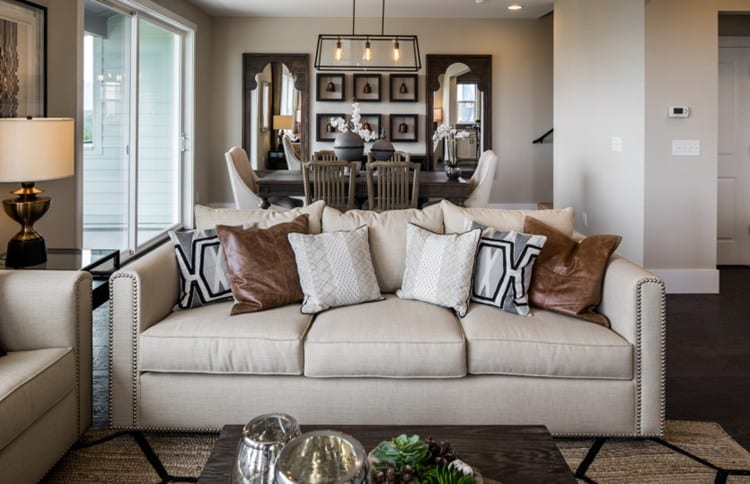
Whether you’re on a budget or working with a professional, it’s time for the real fun to begin! Here are some things to consider before you get started.
Make Your Designing Dollars Go the Extra Mile
Building and buying a new home is a costly endeavor and by the end of it all, you may find yourself pinching pennies and tightening bootstraps to make up for the money that’s so quickly fled your bank account.
Get Out There and Shop
“If you keep your eyes open and are willing to pound the pavement and Internet, you can find some amazing deals,” says San Diego-based interior designer Jen Sagar. “Mixing items from various places allows your home to come together on a budget while still looking custom, not boiler plate and boring.”
Sagar suggests watching for sales at your favorite stores, shopping discount shops and trolling the Internet (Craigslist, eBay, One Kings Lane, etc.) for deep discounts.
Don’t Shy Away from DIY
As you shop, be on the lookout for bargain pieces that may be a bit worse for wear or a little outdated. “A little elbow grease can transform a low-dollar item into a prize,” says Sagar. “Fortunately, the Web is full of amazing how-tos and project ideas.” Plus, once the piece is done and looking fantastic, you can brag to your friends that you did it yourself.
Tip: A big change can be as easy as moving things around within your own home to see them in a new light and love them all over again. “Recently, friends of mine moved some glass tables from outside into their living room,” says Sagar. “They had sprayed on a quick satin-finish gold paint and now they look like a million bucks.”
Timeless vs. Trendy: Cultivating a Home That’s Always in Style
When it comes to fashion, stylists suggest building your wardrobe around timeless staples and incorporating trends through accessories and affordable pieces. The same holds true when it comes to your home. But even more important than not filling your home with hyper-trendy pieces, the key to timeless design is creating a home that you truly love.
“Everyone always says this because it’s the truth: Buy what you love,” says Sagar. “If you buy what you love — not the hot trendy thing — you’ll likely go on loving it for years to come and will find new ways to use it in the future.”
Everyone always says this because it’s the truth: Buy what you love. If you buy what you love — not the hot trendy thing — you’ll likely go on loving it for years to come and will find new ways to use it in the future. — Jen Sagar, San Diego-based interior designer Sagar also suggests not limiting yourself to only one look, one style or one theme. “Mix it up,” she says. “By incorporating layers of color, texture, style and ornament, you’ll cultivate a unique style that will always look uniquely you, never uniquely 2013.”
Tip: For the larger pieces of furniture in your home — sofa, coffee table, dining table, dresser, bed — select options with muted colors and clean lines. That way you can add in more colorful trendy pieces with ease, enabling you to continually update your space without any major purchases.
Bringing in an Expert: Know When to Seek Professional Help
Decorating a home is a big undertaking and not ideally suited for the faint of heart. When it comes to filling a home with the requisite furnishings and personal touches, those overwhelmed by sofa selection and art placement need not apply. If this sounds like you, you may benefit from handing the decorating reins over to a professional.
“A design professional will not only help you make great aesthetic decisions, they’ll also help you manage your project in an economical way and will ultimately act as your advocate when dealing with contractors and other vendors,” says Sagar. “This can save not only money, but valuable time and heartache as well.”
Interior designers and decorators are trained professionals — making a home look amazing is their expertise. They know how to see the big picture, make smart decisions regarding furniture selection and placement, mix and match styles for a curated look and create a look that’s “you,” but just a bit more put together than you could have done it.
Tip: If your design budget is next to nothing, Sagar suggests studying home design magazines. “Designers know how to arrange furniture well — it’s our job,” she says. “Arranging the furniture like you see in the magazines can really help make your space appear more gracious.”

Jennifer Segelke Jeffers is a freelance writer, editor and content strategist with more than a decade of editorial experience. She is the former editor of Austin Monthly Home and Centro Y Sur.

 Bonus Room Idea: A Room For Your Kids
Bonus Room Idea: A Room For Your Kids